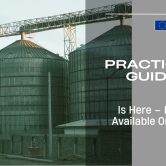Biogas digester can be useful in a circular bioeconomy approach. It can be interesting especially in rural areas where the organic wastes are important. Indeed, biogas digester convert these organic wastes (manure, crop residues and food waste) into biogas (methane and carbon) and digestate. Selecting the right digester technology depends on feestock type, climate, scale, budget and adaptability of an unit. This article outlines the different technologies to create a biogas digester : advantages, principles, functionning and so on.
Here the different technologies :
1.Continuous Stirred Tank Reacto (CSTR)
A CSTR digester is a sealed, heated tank where feedstock is continuously or semi-continuously added and mixed. It maintains a stable hot temperature.
Key Features
- Constant mixing ensures uniform microbial activity.
- Suitable for liquid or slurry-like inputs (manure, silage, food waste).
Pros
- High efficiency and stable gas production.
- Easily automated and scaled.
Cons
- Requires heating (energy input).
- Not ideal for dry feedstocks without dilution.
Used in: Germany’s agricultural cooperatives, Denmark’s farm biogas programs.
- Plug Flow Digesters
Ideal for High-Solids Feedstock (dry manure, silage)
Description
Feedstock enters one end of a long horizontal reactor and flows slowly to the other end without mechanical mixing. Bacteria break down organic material as it moves in a “plug” through the system.
Key Features
- Simple and low maintenance.
- Effective for farms with dry cattle manure.
Pros
- Lower capital cost and energy use.
- Good for cold climates with proper insulation.
Cons
- Less efficient gas yield than CSTR.
- More prone to clogging without pre-processing.
Used in: Alpine farms (Austria, Switzerland), Mediterranean dryland agriculture.
- Covered Lagoon Digesters
Low-Cost Option for Warm Climates and Large Manure Volumes
Description
A lined lagoon is covered with a flexible membrane to capture biogas. Anaerobic digestion occurs slowly and passively.
Key Features
- No mechanical mixing or heating.
- Best for flush manure systems (pigs, dairy).
Pros
- Extremely low operating cost.
- Useful for odor control and methane capture.
Cons
- Requires large land area.
- Not suitable in cold climates or for dry feedstocks.
Used in: Southern Spain, Portugal, and large dairy farms in temperate zones.
- Fixed Dome Digesters
Small-Scale Rural Use (Household/Farm-Level)
Description
A buried dome-shaped digester with a fixed roof where gas collects. Organic waste is added manually, and gas pressure displaces slurry into an overflow chamber.
Key Features
- No moving parts; simple masonry structure.
- Used widely in Asia, increasingly piloted in Eastern Europe.
Pros
- Durable and low maintenance.
- Long lifespan (20–30 years).
Cons
- Difficult to regulate gas pressure.
- Construction requires skilled labor.
Used in: Pilot projects in Romania, Hungary, Western Balkans.
- Batch Digesters (Dry Fermentation or Garage-Type)
Efficient for Seasonal, Dry Biomass (e.g. maize stalks, straw)
Description
Feedstock is loaded into a sealed chamber and left to digest for 20–30 days. No material is added or removed during the process.
Key Features
- Operates in batches rather than continuously.
- Often used with leachate recirculation for microbial activity.
Pros
- Handles dry feedstocks without water dilution.
- Compact, modular, and scalable.
Cons
- Downtime between batches.
- Requires multiple chambers for continuous operation.
Used in: France, Italy (straw/vegetable residues), Germany (co-digestion with manure).
- Upflow Anaerobic Sludge Blanket (UASB)
Advanced System for Industrial/Rich Wastewater
Description
Wastewater flows upward through a dense microbial sludge, which breaks down organics and produces biogas. Often used in agro-industries (e.g., dairies, breweries).
Key Features
- High efficiency and low retention time.
- Suitable for liquid, high-COD effluents.
Pros
- Compact footprint.
- Continuous gas production.
Cons
- Sensitive to loading rate and toxins.
- Not suited for solid waste or household farms.
Used in: Food processing plants in Netherlands, Belgium, Czech Republic.
Synthesis
| Technology | Feedstock | Scale | Cost | Mixing/Heating | Typical Use |
| CSTR | Liquid/Slurry | Medium–Large | High | Yes | Farm cooperatives |
| Plug Flow | Dry Manure | Medium | Moderate | No | Dairy farms |
| Covered Lagoon | Liquid Manure | Large | Low | No | Warm climate farms |
| Fixed Dome | Organic Waste | Small | Low | No | Households, pilot projects |
| Batch (Dry) | Dry Biomass | Medium | Moderate | Minimal | Seasonal agri-waste |
| UASB | Liquid Industrial | Large | High | Yes | Agro-industries |
Conclusion
The choice of biogas digester technology is crucial for long-term fonctionning and for surroundings fit. Several factors need to be anlyze during the creation of a biogas digester unit such as climate, feedstock availability, project scale, labor capacity, and funding that must guide the decision.
As rural Europe moves toward energy autonomy and climate resilience, adapted biogas technologies can turn agricultural waste into local energy and economic opportunity.




